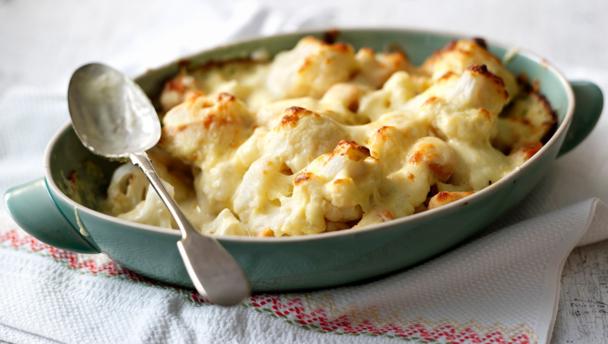

By James Martin
Cauliflower is incredibly versatile as you can see from our wealth of recipes - from curries, to soups to the comforting cauliflower cheese. Inexpensive and local, it ticks all the right boxes, so don't skimp on this classic British vegetable.
 The ultimate Christmas roast beef
The ultimate Christmas roast beef
 Roasted cauliflower and lentil salad with red pepper sauce
Roasted cauliflower and lentil salad with red pepper sauce
 Spiced soy roast chicken
Spiced soy roast chicken
 Cauliflower salad with barbecue chicken and honey
Cauliflower salad with barbecue chicken and honey
 Cauliflower soup
Cauliflower soup
 Stuffed paratha for kids
Stuffed paratha for kids
 Curried cauliflower soup
Curried cauliflower soup
 Caramelised scallops on cauliflower purée with pancetta
Caramelised scallops on cauliflower purée with pancetta
 Spiced cauliflower with toasted coconut and red lentils
Spiced cauliflower with toasted coconut and red lentils
 Spiced cauliflower
Spiced cauliflower
 Piccalilli
Piccalilli
 Instant Punjabi-style pickle
Instant Punjabi-style pickle
Romanesco is a variety of green cauliflower with pointed, lime-green curds. It is more delicate than the standard cauliflower, and cooks more quickly. You may also find orange or purple cauliflowers in farmers’ markets and farm shops.
Choose cauliflowers with firm, compact, creamy-white heads, stout fresh leaves, and clean white stalks. Avoid any with limp, yellowing leaves, slimy stalks or spotted brown curds.
Cauliflower is in season from February to May and again from August to December.
A good, undamaged head will keep loosely wrapped for over a week in the fridge. Supermarkets tend to cut off the leaves, but in fact they give the delicate curd extra protection.
To freeze, divide the cauliflower into florets and wash. Blanch in boiling water, drain, plunge into iced water and drain again. Transfer to freezer bags, label and seal. Cook from frozen.
Trim off the leaves, cut off the core and separate the individual florets. Steam, fry, stir-fry or eat the florets raw in salads or eat as crudités with dips. Serve as a vegetable accompaniment to meat and poultry dishes, or use in soups, fritters, bakes, curries and, of course, cauliflower cheese. Cauliflower is also a major ingredient in piccalilli. Try roasting cauliflower – it really concentrates the flavour.
Article by Clarissa Hyman
Type the ingredients you want to use, then click Go. For better results you can use quotation marks around phrases (e.g. "chicken breast"). Alternatively you can search by chef, programme, cuisine, diet, or dish (e.g. Lasagne).